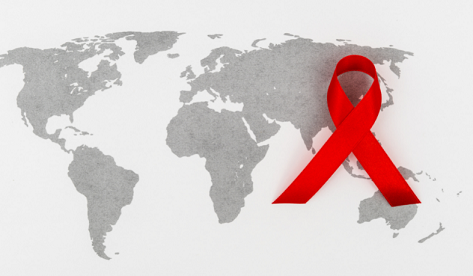10 Symptoms of HIV You Should Know
10 mins,



In this article, we explore the key symptoms of HIV, from early signs to chronic indicators. Learn how to recognize potential HIV-related issues and the importance of early detection for effective management.

Whether you are HIV positive or not, it is important that you have an adequate understanding of the symptoms of HIV, as well as the early signs, chronic indicators, and the significance of recognizing potential HIV-related issues.
The human immunodeficiency virus (HIV) targets the body’s defences, particularly the white blood cells known as CD4 cells. These CD4 cells are destroyed by HIV, which lowers a person’s defences against infectious illnesses like tuberculosis, fungal infections, serious bacterial infections, and some malignancies.
HIV/AIDS cannot be cured. However, medications can manage the infection and prevent the illness from worsening. Worldwide AIDS deaths have decreased as a result of antiviral therapies for HIV.
Knowing these symptoms of HIV is not only essential for individuals at risk but also plays a crucial role in promoting early detection and effective management.
One of the most noticeable sign is the flu-like symptoms associated with the initial weeks after contracting HIV. From fever and fatigue to muscle aches and swollen lymph nodes, these early symptoms of HIV, collectively known as acute retroviral syndrome (ARS), are explored in detail as you read further.
Some persistent symptoms of HIV may signal the progression of HIV. You can notice these from ongoing fatigue, recurring fevers and prolonged diarrhea. Recognizing these chronic indicators becomes vital in identifying potential symptoms of HIV-related issues.
There’s a relationship between HIV and skin problems. The symptoms of HIV can come in the form of rashes, sores, and lesions that may manifest as a result of opportunistic infections or medication side effects.
HIV can affect the respiratory system, leading to symptoms such as coughing, shortness of breath, and persistent chest infections. Individuals with advanced HIV or AIDS may be more susceptible to respiratory illnesses due to a weakened immune system.
Unexplanable and unintentional weight loss can be one of the symptoms of HIV infection. A weakened immune system may impact the body’s ability to maintain weight, so it is important to address significant, unexplained weight loss promptly.
HIV also impacts on the central nervous system, resulting in neurological symptoms such as memory loss, difficulty concentrating, and changes in behavior. Severe cases can progress to neurocognitive disorders.
Symptoms of HIV can manifest in form of digestive problems, such as nausea, vomiting, abdominal pain, difficulty swallowing, and chronic gastrointestinal infections.
One of the hallmarks of advanced HIV infection—increased susceptibility to opportunistic infections. They can come in various forms, affecting different organs and systems of the body.
HIV can also show signs on oral health by introducing conditions like thrush, ulcers, and persistent gum problems. This is why it is very important to go for regular dental check-ups.
Another possible symptom of HIV is enlarged lymph nodes, particularly in the neck, armpits, or groin. This is usually a potential sign of an immune system response to infection.

Telemedicine is the use of telecommunication devices to consult healthcare professionals. Whatever symptoms of HIV you are having, you can always speak to a doctor through your mobile device. Telemedicine is a medium that bridges gaps between seeking quality advice on symptoms of HIV and recognising possible HIV management.
You can contact healthcare professionals from the comfort of your sofa, you do not need to drive, park, walk, or wait in a waiting area at the doctor’s office or clinic. Telemedicine is an easy platform that improves acceptance of HIV preventive and care services while also expanding access to them.
Through telemedicine, you can have early HIV diagnosis and treatment initiation, the prescription of medication for viral suppression, and the stopping of new HIV infections. Telemedicine makes it easy for you to have a family member along to help with information gathering, and this considerably reduces gaps in reaching specific Nigerian groups.
Do you experience any of these symptoms and suspect you may be at risk of contracting HIV, Talk to an Expert Doctor today.

You can help reduce the number of new infections by being more intentional about your hygiene and sexual health, among other things.
Go for routine HIV screening as well as practice Safe Sex and Sexual Responsibility.

Acquired immunodeficiency syndrome (AIDS) is a term that applies to the most advanced stages of HIV infection. It is defined by the occurrence of any of the more than 20 life-threatening cancers or “opportunistic infections”, so named because they take advantage of a weakened immune system. AIDS was a defining feature of the earlier years of the HIV epidemic, before antiretroviral therapy (ART) became available. Now, as more people access ART, the majority of people living with HIV will not progress to AIDS.
2. How is HIV infection treated?
While there is no cure for HIV infection, it can be treated using antiretroviral drugs, which work by stopping the replication of the virus. ART can reduce the level of virus to such low levels in the body that the immune system will function normally, and a person living with HIV can enjoy good health, provided they adhere to treatment and the treatment remains effective. People living with HIV are also much less likely to transmit the virus to others when treatment is working.
3. How effective are condoms in preventing HIV?
When used correctly and consistently every time a person has sex, condoms are among the most effective means of preventing HIV infection in women and men.
4. Is there a cure for HIV?
No, there is currently no cure for HIV. Science is moving at a fast pace, and there have been 3 people who have achieved a ‘functional cure’ by undergoing a bone marrow transplant for cancer with re-infusion of new CD4 T cells that are unable to be infected with HIV. However, neither a cure nor a vaccine is available to treat and protect all people currently living with or at risk of HIV. But with good and continued adherence to ART, HIV infection can be contained and managed as a chronic health condition. In all parts of the world, people living with HIV are now surviving and thriving into old age.
5. How can people get tested for HIV?
Testing for HIV is the only way to know if a person has HIV or not. HIV can be diagnosed using rapid diagnostic tests that provide results within minutes. However, such results should only be considered as a full diagnosis following review and confirmation by a qualified health worker.
Knowledge of one’s HIV-positive status has two important benefits:
A HIV/AIDS world is possible.
It begins with you!
6. How is HIV transmitted?
Certain body fluids of HIV-positive individuals, such as blood, semen, vaginal fluids, rectal fluids, and breastfeeding, contain HIV. HIV can be spread through a number of different channels, including unprotected anal or vaginal sex, blood transfusions from contaminated donors, the use of syringes, needles, and various injecting supplies, the sharing of surgical supplies or sharp items, and from an HIV-positive mother to her child through breastfeeding or pregnancy.
When on antiretroviral therapy (ART), an HIV-positive individual whose viral load is “undetectable” will not transmit HIV to their partner or partners.
7. What is the relationship between HIV and STIs?
If you have sexually transmitted infection (STI), you are more likely to get an HIV infection, and vice versa. People who participate in unsafe sexual behaviours (such as not using condoms, having several partners without protection, or having sex while under the influence of drugs or alcohol) have a much higher chance of contracting HIV or other STDs.
You can get an HIV infection easily due to the sores and inflammations caused by certain STIs. Research shows that having genital herpes (HSV-2) nearly triples a person’s chance of getting HIV in both men and women. In addition to a number of other risks, women living with HIV are six times more likely to develop cervical cancer and are at a high risk of contracting the human papillomavirus (HPV).
8. How can the vertical transmission of HIV be prevented?
HIV can be passed from a pregnant woman to her unborn child through childbirth or nursing. However, with adequate measures, such as the mother using ART and the baby receiving a brief course of antiretroviral medication, such vertical transmission can be avoided.
Preventing HIV acquisition in expectant mothers, preventing unwanted pregnancies in HIV-positive women, and adopting suitable nursing practices are other helpful strategies. In order to provide women who are at risk with easy access to testing, HIV testing programs ought to be incorporated into maternity and child health services. HIV-positive moms and pregnant women should start antiretroviral therapy (ART) immediately to ensure that their unborn offspring are HIV-free.
9. What is PrEP?
HIV-negative individuals can prevent HIV acquisition by taking a course of antiretroviral medications known as pre-exposure prophylaxis (PrEP). If used as prescribed, it can almost completely prevent HIV infection. For people who are more likely to contract HIV, PrEP is advised. These groups could include young women in southern Africa, drug users, sex workers, and men who have sex with men.
It has also been demonstrated that long-acting PrEP medications are beneficial for avoiding HIV infection. Effective treatments for men and women include an intramuscular injection administered every eight weeks, and a monthly vaginal ring for women. There are now global initiatives to improve access, despite the fact that it is not currently widely available.
Amaka, B. (2024). Sexually transmitted infection symptoms in men.
HIV.gov. (2023). World AIDS Day.
Mayo Clinics. (2024). HIV/AIDS.
NHS. (2021). Symptoms: HIV and AIDS.
South Louisiana Medical Associates. (2024). AIDS Awareness.
Western Cape Government. (2024). Community participation and leadership in spotlight on World Aids Day.
World Health Organization. (2024). HIV/AIDS.

Ginika is the Lead health writer at KompleteCare. She also doubles as an editor and proofreader for everything that concerns content. When she's not writing content for KompleteCare, you might find her copy-editing works for authors before publication.
We publish helpful posts every week!